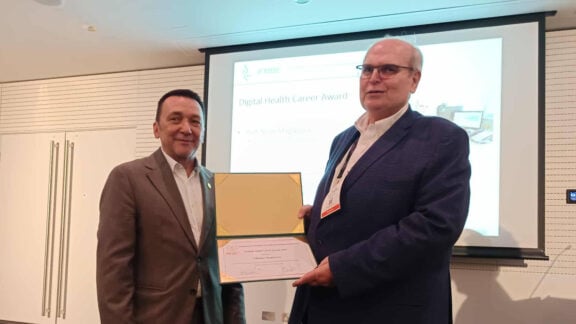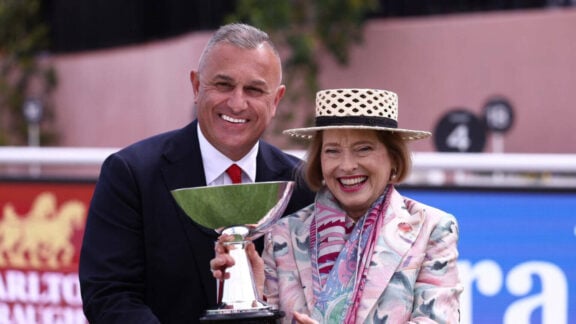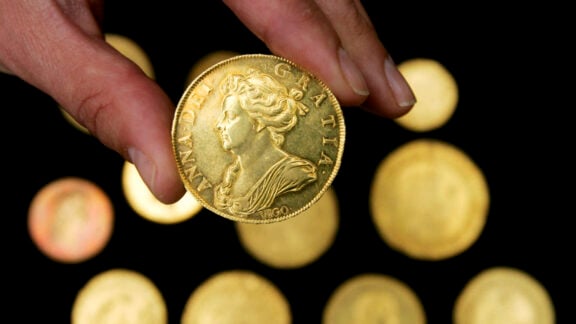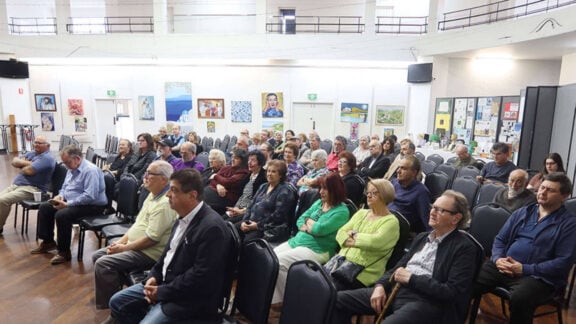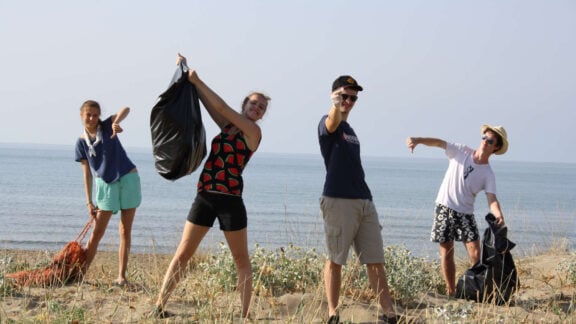This is a reverse migration story. While so many Greeks were leaving to settle in Australia in 1967, my father had other ideas. He could see that Rhodesia (now Zimbabwe) was going to face big political trouble, so he decided to send my brother, Dimitri, then aged 8 and myself, aged 5 to live with my grandparents in Yiannina.
It was a strange, tough decision to make. His idea was that we would have settled into school when he would bring my mother and my three-year-old sister at a later stage.
After I was smothered by the embrace of this old woman who turned out to be my grandmother talking in words I did not understand, I took a good look at the neighbourhood that would be my home over the next three years. The house was set in the Kastro, the old castle built by the old Albanian brigand Ali Pasa and that was interesting.
The Africa that I had come from seemed so far ahead of Greece. After all, in the Greece that I arrived in, there were guys making deliveries on horse-drawn carts, there was no fridge in my grandparents’ home and ice blocks had to be brought to keep cool the food in the big cooler box. My grandparents did not have a stove, a washing machine or, God forbid, a television. How was I going to catch the latest episode of Batman, Bewitched or I Dream of Jeannie?
READ MORE: Every picture tells a story
The dirt road, Paleogou, was wide and ran past the house leading to the King’s Palace (now empty following the Colonels’ coup) and the church of Agion Anargiron. Beyond that, the army had a barracks that was out of bounds to civilians. Army jeeps and trucks regularly raised the dust on the road. That also did not impress me. The Bulawayo that I had left behind had neat, tarred roads that were well paved and even separate lanes just for bicycles.
But the street in Yiannina, was wide enough for both army vehicles pass and the kids to play safely. I soon realised that Paleologu served as the forum for the yitonia (neighbourhood). Especially for kids who were of the same age as my brother and I. Kids who were the children of parents who had grown up with my father -and because of that I was already part of a history that I had little knowledge of at the time.
My father had played with Andonis, Yiorgos and Dimitris Bestas. Their children were my friends: Thio Andonis’ Christo and Spiro, Yiorgos’ daughters Mariana, Christina and Nadia.
That dirt road, unimpressive as it was, turned out to be the social club hub of my parea (group of friends). After we dropped off our school things and had a bite to eat, we would meet there to socialize. No TV, no adults.
In summer, we would be out all day and late into the night. Only food and the mandatory siesta brought us indoors.
Bulawayo had its big park with a model steam train, swings, roundabouts and impressive slides, skating rink and a huge pond to sail model boats. The yitonia just had the dirt road and the imagination of children to turn it into something altogether more magical.
The games came and went according to the seasons and what was most popular. When spring approached, we were out making kites that never seemed to take off even in the winds of March. In Autumn, when the chestnuts came out, we would make holes in them and tie a piece of string to them and try to bash the opponent’s conker to smithereens.
In summer, the bee-like aspromites (white-nose) and mavrormites (black-nose) predominated and they were ideal fodder for a special activity for the street. It was very important to tell the colour difference of the insect’s probosci, because while they looked almost identical, the black-nose had a sting. The trick was to catch the harmless white-nose and skillfully tie a cotton thread noose around one of its feet without disemembering it. Once tied, the poor creature could only fly around in circles. If you caught a few, you could carry a nice buzzing circlet of insects around with you.
READ MORE: Immigration Museum reopens with personal stories, including a Greek angle

During the daytime, the boys stuck to their games, football was the most popular until the ball ended up in the cranky neighbour’s yard, in which case it would be flung back over the wall punctured by the misanthrope’s pen knife.
Then there were the infinite variety of marble (billies) games that tested throwing abilities and nurtured at an early age the gambling spirit. Lose the game and you lose your marbles. The courses of the games were scratched out in the dirt. The old folk loved to sit out in the cool of the evening to laugh at the arguments and the posturing.
The girls played their hopscotch (koutso) also scratching the field of play in the dirt of the road with stones (plakakia) to mark their progress. They also played elastihakia (rubber bands) which they tied around their ankles, thighs or waists to jump in such a way to create different patterns. They were skillful games that no boy would be caught dead playing – mainly because they required a set of skills that we could not easily muster.
These games were played out it in the open but it would be a mistake to think we were not watched. The adults were around although they seldom interfered in our world. They would come out to chat on the pavement or bring out their knitting and crochet and sit in an avli (yard) to share a cup of coffee, chat and laugh.
But always there was an eye quietly monitoring what the little ones were doing. They were our aunts and uncles and I did not understand that then. They were not the same blood but we were their children nonetheless.
In the evenings, after supper, we would be back out on the street again and it was the time when boys and girls would play games together – games like krifto (hide and seek) with sometimes up to 30 children disappearing into the dark while the kid who was on counted to a staggering 100 before starting the search.
READ MORE: The first Greek migrants who settled in Australia are the real heroes of the diaspora

When we got tired of that, there was broken telephone (Spasmeno Tilefono) to fall back on. It was through this game of distorted messages passed down the line of kids that you could figure out who had a crush on who. Giggle, giggle.
As it got later in the night, the older kids hauled the ghost stories to terrify the younger ones. And in the hush of the warm evenings and the flickering light of the fireflies, anything became believable
My brother held court then with his stories of Africa: the lions we fought off in the streets, the elephants that carried us to school and the poisonous spitting cobras which hid under our beds. The dark hid his cheeky grin as the others gaped and gasped.
If a courting couple was unlucky enough to be spotted trying to enjoy a private romantic moment in the steno (alleyway) linking the streets between the neighbourhoods, they would soon find themselves surrounded by whispering, giggling kids hidden by the dark – the pixies spoiling a romantic fairy tale. No place for privacy in the yitonia.
Sometimes history would intrude in our games. Suddenly we were Ancient Greeks dressed in cardboard armour with cardboard shields armed with swords and bows made from the branches of the neighbourhood trees and arrows from the young bamboo shoots that grew straight on the shores of Lake Pamvrotis nearby. I blame all the Italian gladiator (masistika) movies that were then the rage at the matinee cinemas for that particular street craze.
Sports events in the news were also played out in our games. At football, we all claimed to be Domazos or Pele. In the summer of 1968, we were fired by the achievements of Greek pole-vaulter Christos Papanikolaou who fell just one place short of a bronze medal at the Olympic games in Mexico (he was to hold the world record for a 5.49m vault from 1970 to 1972).

In his honour, we dug up a sand pit in the street and resorted to the lake for more bamboo sticks for the uprights and the poles. Forget about high-jump mats or landing mats. You either made the jump and landed on your feet, or you crashed through the uprights, or the “pole” broke under your weight. The wonder was that no one broke any bones but they certainly scraped knees and cut themselves on the bamboo.
In those days, it was best to disguise the scrapes from the adults because out would come the surgical alcohol that stung worse than a thousand mavromites and the mercurochrome that protected the wound with a red sheen brighter than a red traffic light that lasted for days.
I went back to Yiannina some years later. Greece was transforming by then and rapidly catching up to the rest of Europe. The street was now paved. It looked really smart. But there were no kids playing there any more. There was nowhere to scratch out the surface for marble games and hopscotch or draw the lines with a stick to mark the day’s football soccer pitch.
The automobile had finally won that battle or play area was now parking space and no one wanted balls bouncing around there. Now every house had a TV, a fridge, an oven and although people still took the time to come out and chatter to their neighbours, the kids played in their own yards with their chosen friends.
The community of the dirt road was gone and I was sad that the children of the new generation would not be able to enjoy their street the way we had in our time. It may not have been a lot but we made our world out of it.

